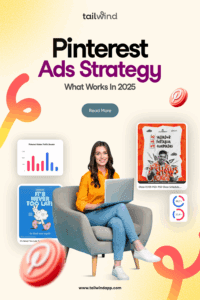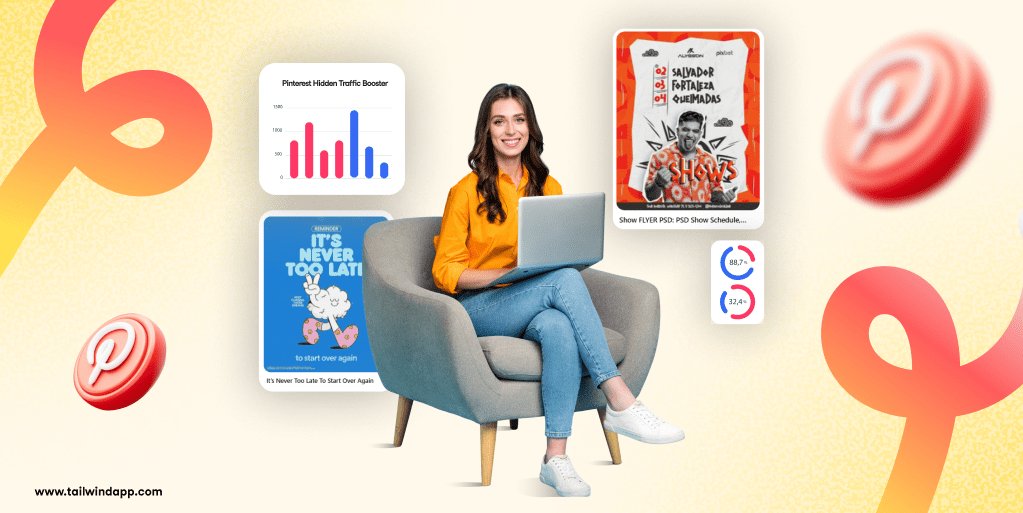
Pinterest ads have evolved dramatically, and if your strategy hasn’t kept pace, you’re leaving money on the table. While many marketers still treat Pinterest as purely a top-of-funnel discovery platform, the reality is that Pinterest drives serious conversions when you set up your campaigns with the right strategy.
This guide covers the most effective Pinterest paid ad strategies for 2025, backed by platform updates and insights from Tailwind’s 2025 Benchmark Study that analyzed over 1 million Pins. New to Pinterest advertising? Check out our complete guide to creating Pinterest ads for step-by-step setup instructions.
What Changed with Pinterest Ads in 2025?
Pinterest’s advertising platform has undergone significant updates in 2025, shifting toward more sophisticated targeting and improved user experiences.
The platform now emphasizes predictive personalization more heavily, using machine learning to serve ads to users who are most likely to engage based on their past behavior patterns.
Shopping Ads have received a major push with updated product feed capabilities. Pinterest has streamlined the process for ecommerce brands to showcase their products directly in the feed, making shopping seamless for users.
The targeting system now offers more granular options through combined interest and behavior targeting. You can layer demographic data with interest signals and keyword targeting to reach highly specific audiences.
2025 Pinterest Ads Strategy Breakdown
Successful Pinterest advertising in 2025 requires a strategic approach that goes beyond basic awareness campaigns. Pinterest isn’t just a top-of-funnel platform. It drives conversions when you align your strategy with how people actually use the platform.
The winning formula combines layered targeting with Fresh Pin content and clear calls-to-action. Users come to Pinterest with intent — whether they’re planning a home renovation, searching for outfit inspiration, or researching their next purchase.
Match Creative to Seasonal Search Intent
Pinterest users plan ahead. They’re searching for “summer outfit ideas” in April and “holiday decorating” in September. Use this behavior to your advantage by aligning your ad creative with seasonal search spikes.
For example, it’s July as I write this, and Halloween ideas are already starting to trend on Pinterest.
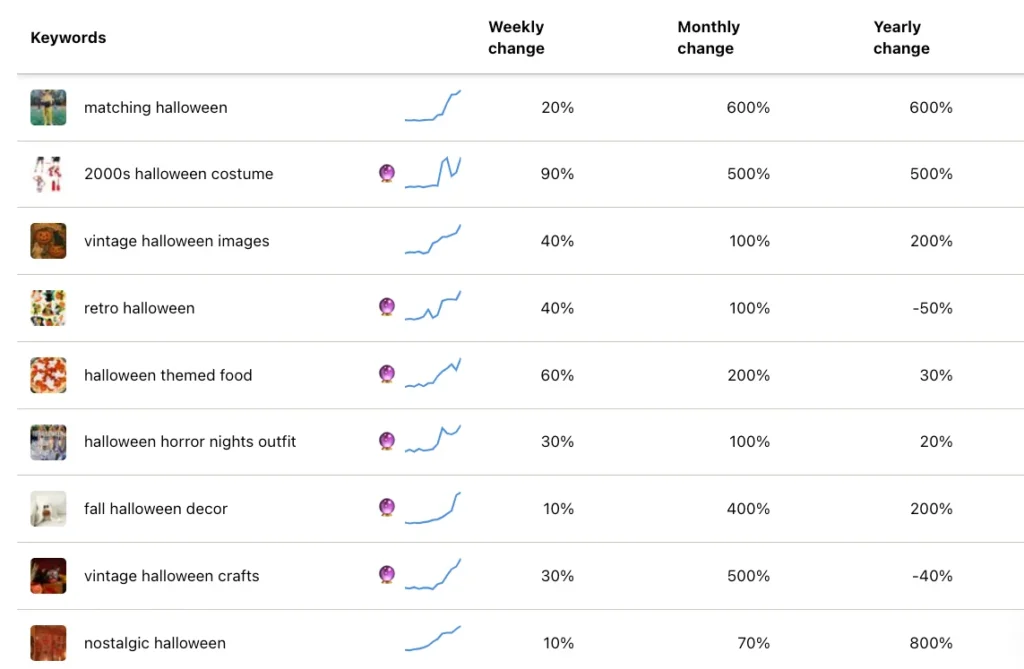
Research shows that content aligned with seasonal interests performs significantly better. For deeper insights into Pinterest user behavior and optimal timing strategies, explore Tailwind’s Pinterest marketing research.
Always align your Pin design with the seasonal spike you’re targeting. If you’re promoting summer dresses in March, your creative should feel fresh and seasonal, not like recycled content from last year.
Pro Tip:
Use Tailwind SmartPin to get a fresh, new Pin every week for your content. Use these fresh Pins as ads or without any additional paid promotion. It’s the easiest way to keep your content fresh.
Target with Interests + Keywords
The most effective Pinterest ads strategy combines keyword targeting with interest-based targeting. Instead of relying on broad demographic targeting, layer specific keywords like “summer outfit ideas” with relevant interests like “women’s fashion.”
This dual approach helps you reach users who are actively searching for your content type while also capturing those browsing related topics. Avoid overly broad audiences with no clear intent signals. Pinterest’s strength lies in reaching people when they’re in a planning or discovery mindset.
Creative That Converts
Pinterest remains a highly visual platform, and your ad creative can make or break your campaign performance. Vertical Pins with a 2:3 aspect ratio (1000×1500 pixels) continue to dominate the platform, and this extends to paid content. The vertical format takes up more screen real estate on mobile devices, where over 80% of Pinterest traffic occurs.
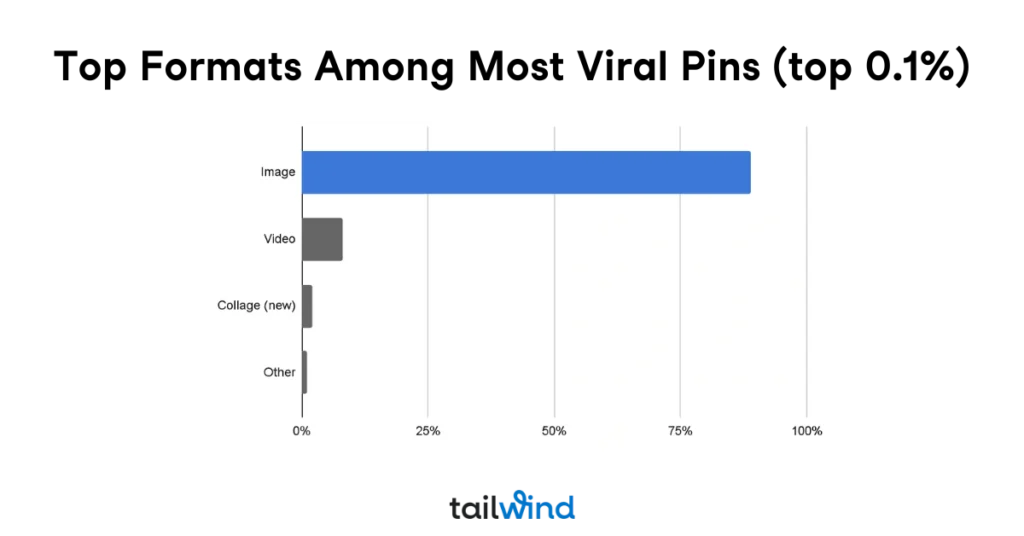
Successful ad creative combines lifestyle imagery with product closeups to capture attention quickly. Text overlays remain crucial for ad performance. Unlike organic Pins where the visual might speak for itself, ads need clear messaging that communicates your offer or call-to-action.
Here’s an example of a handbag in a lifestyle setting (as someone carries it):
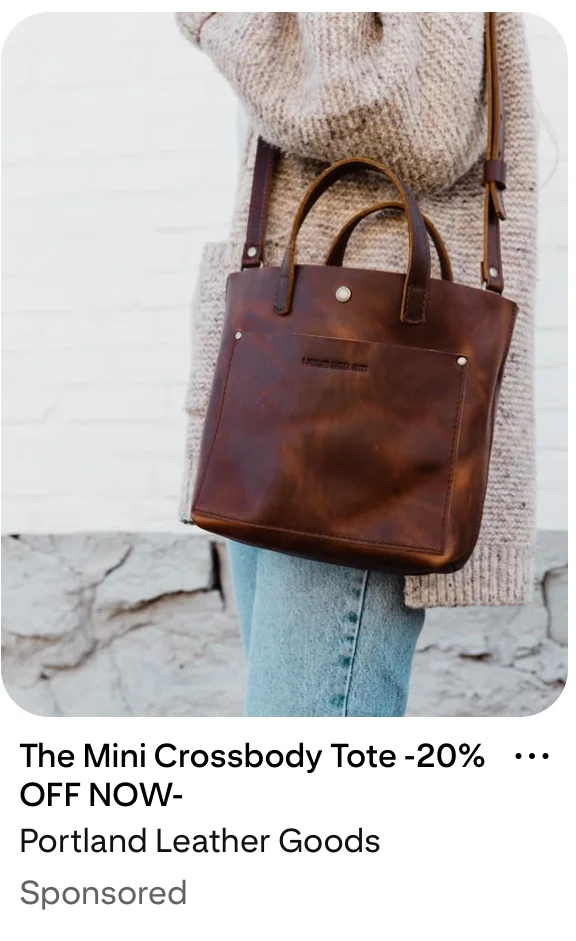
And here’s a product closeup of a handbag (note the Collection Pin – it’s a great way to show a range of colors):
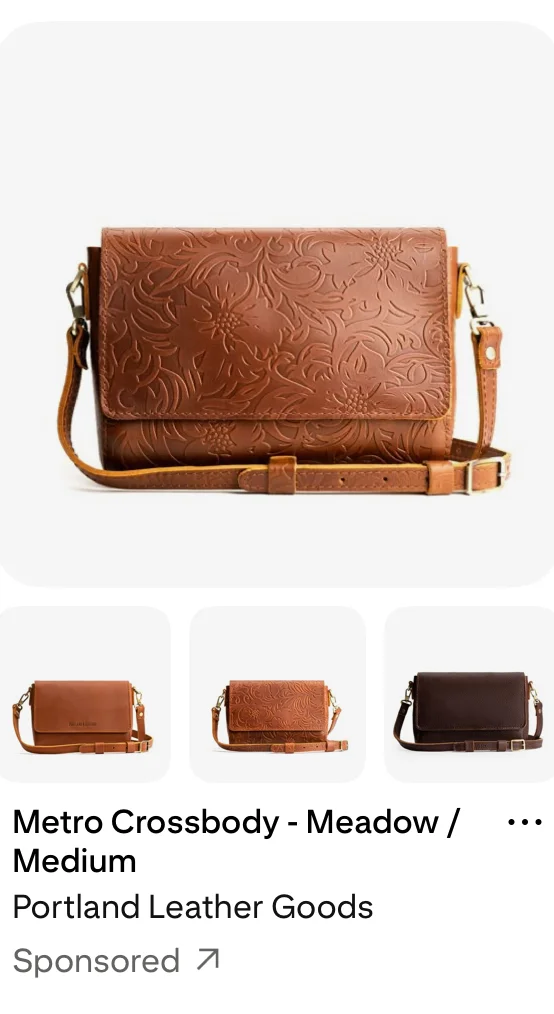
Pin Design Tips for Ads
High contrast visuals perform best in the crowded Pinterest feed. Use light backgrounds with dark text or vice versa to ensure your message stands out. Include a clear call-to-action both in your text overlay and Pin description. Users should know exactly what action you want them to take.
Avoid busy backgrounds or cluttered graphics that make your Pin hard to scan quickly. Remember, users are scrolling fast, so your design needs to communicate its value proposition in seconds.
Best Practices for Pinterest Paid Campaigns in 2025
Creating successful Pinterest advertising campaigns requires attention to specific tactical details that can significantly impact your return on ad spend. Always create new Pins (Fresh Pins) for each advertising campaign. Pinterest’s algorithm heavily favors Fresh content over Saves, and this preference extends to paid campaigns.
Test 3-5 different creative variations per ad group to identify your top performers. Pinterest’s audience responds differently to various visual approaches, so testing multiple designs helps you optimize for your specific audience and product type. Need help creating multiple Pin variations quickly? Tailwind’s scheduling tools can help streamline your creative testing process.
Optimize for Mobile Clicks
Over 80% of Pinterest traffic comes from mobile devices, making mobile optimization non-negotiable for ad success. Ensure all text is legible on mobile devices. Test your Pins on your phone before launching campaigns; if you can’t read the text clearly, neither can your potential customers.
Make clickable areas easy to tap. Avoid placing important buttons or links too close to other elements that might cause accidental clicks or missed interactions.
Measure What Matters
Track conversions, not just click-throughs, to understand your true return on ad spend. Pinterest provides robust conversion tracking tools, but you need to implement them correctly to get accurate data.
Use Pinterest’s native conversion tag or server-side tracking for the most accurate attribution. Focus on metrics that align with your business goals. If you’re driving leads, track lead quality and cost per qualified lead. If you’re an ecommerce brand, monitor revenue per click and return on ad spend.
Who Should Be Using Pinterest Ads in 2025?
Pinterest advertising works exceptionally well for specific types of businesses, while others may struggle to see strong returns. Ecommerce brands in visual niches see the strongest Pinterest ads performance. Categories like home decor, fashion, wellness, beauty, and food naturally align with Pinterest’s discovery-focused user behavior.
Service-based brands can also succeed with Pinterest ads, particularly those offering strong lead magnets. Think downloadable guides, webinars, courses, or free consultations. Pinterest users are often in research mode, making them ideal candidates for educational content.
Pinterest advertising typically doesn’t work well for low-margin products or hyper-competitive generic items. The platform’s users expect quality and uniqueness, so commodity products often struggle to stand out.
Final Takeaway: What Works in 2025
Pinterest advertising remains one of the most underutilized digital marketing channels, creating significant opportunities for businesses that implement the right strategy. The platform’s unique user behavior and intent-driven audience make it particularly valuable for brands willing to align their approach with how Pinterest users actually behave.
The winning formula for Pinterest ads in 2025 combines Fresh creative content with precise keyword and interest targeting, all optimized for mobile-first vertical visuals. Success requires patience, as Pinterest’s longer consideration cycles mean results often take weeks rather than days to materialize.
Use Pinterest advertising as part of a broader marketing funnel rather than expecting immediate conversions. The platform excels at building awareness and consideration among highly engaged users who are actively planning purchases or projects.
Strong visual content remains the foundation of Pinterest advertising success. Invest in high-quality, vertical creative that includes clear calls-to-action and aligns with seasonal search behavior.
Most importantly, Pinterest advertising works best when it provides genuine value to users who are actively seeking solutions. Focus on being helpful rather than promotional, and your campaigns will benefit from Pinterest’s user-centric algorithm optimization.
Frequently Asked Questions
How much should I budget for Pinterest ads when starting out? Start with at least a $500-1000 monthly budget to give Pinterest’s algorithm enough data to optimize effectively. Smaller budgets limit the platform’s ability to find your ideal audience and optimize for conversions.
How long does it take to see results from Pinterest advertising? Pinterest campaigns typically need 2-4 weeks to fully optimize, with initial performance data available within the first week. The platform’s planning-focused user behavior means conversions often happen weeks after initial exposure.
Should I promote my existing Pins or create new ones for ads? Always create Fresh Pins for advertising campaigns. Pinterest’s algorithm heavily favors new content over existing Saves, so promoting old Pins will limit your reach and increase costs.
What targeting options work best for Pinterest ads? Combine keyword targeting with interest-based targeting for the most effective audience reach. Layer specific search terms with related interests to capture both active searchers and broader topic browsers.
How important is mobile optimization for Pinterest ads? Critical. Over 80% of Pinterest traffic is mobile. All ad creative must be easily readable and clickable on mobile devices, with vertical formats performing best.
Should I use automatic or manual bidding for Pinterest campaigns? Start with automatic bidding to gather performance data, then switch to manual bidding after 2-3 weeks once you understand your target cost per conversion and audience behavior.
What is a product closeup in Pinterest?
A product close-up is a detailed image that focuses on the features, texture, or design of a specific product. Unlike lifestyle imagery, which shows how a product fits into a broader scene, a close-up zooms in to highlight the item itself — often filling most or all of the Pin space. Product closeups are often taken on white or neutral backgrounds.
What is a lifestyle image in Pinterest?
Lifestyle imagery on Pinterest refers to photos that show a product or idea in a real-world context. Instead of displaying an item on a plain background, lifestyle images capture how the product is used, styled, or enjoyed in everyday life.
For example, instead of showing just a chair against a white background, a lifestyle image would show the chair styled in a cozy reading nook with good lighting and complementary decor.
